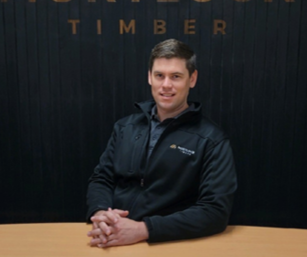Understanding the Carbon Footprint of Timber
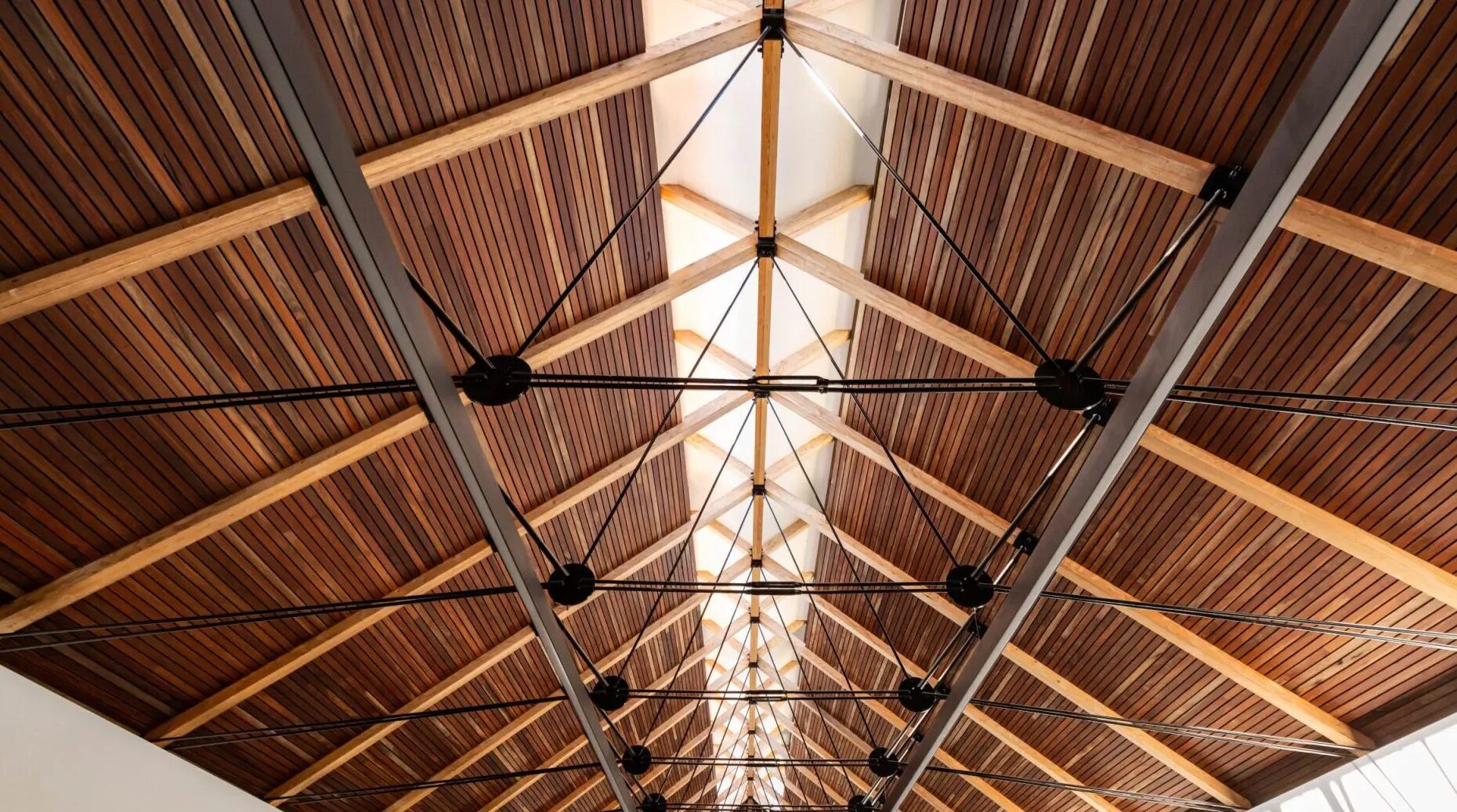
Key Takeaways
- Timber has one of the lowest carbon footprints among major building materials due to natural carbon sequestration.
- Sustainably managed forests ensure harvested timber continues to store carbon while supporting biodiversity.
- Compared to steel, concrete, and aluminium, timber’s lifecycle emissions are significantly lower.
- Coatings and maintenance can extend timber’s lifespan, making it an even more sustainable choice.
The conversation around sustainability in construction is increasingly pivotal, and at its core lies the concept of carbon footprints. This measure of environmental impact assesses how various materials contribute to greenhouse gas emissions throughout their lifecycle.
From extraction and processing to transportation and installation, every step in the life of a construction material either mitigates or exacerbates its carbon footprint.
As the industry seeks greener alternatives, timber emerges into the spotlight. Today, we’ll explore how timber can play a crucial role in reducing carbon emissions and how its carbon footprint compares to other building materials.
Carbon sequestration in timber
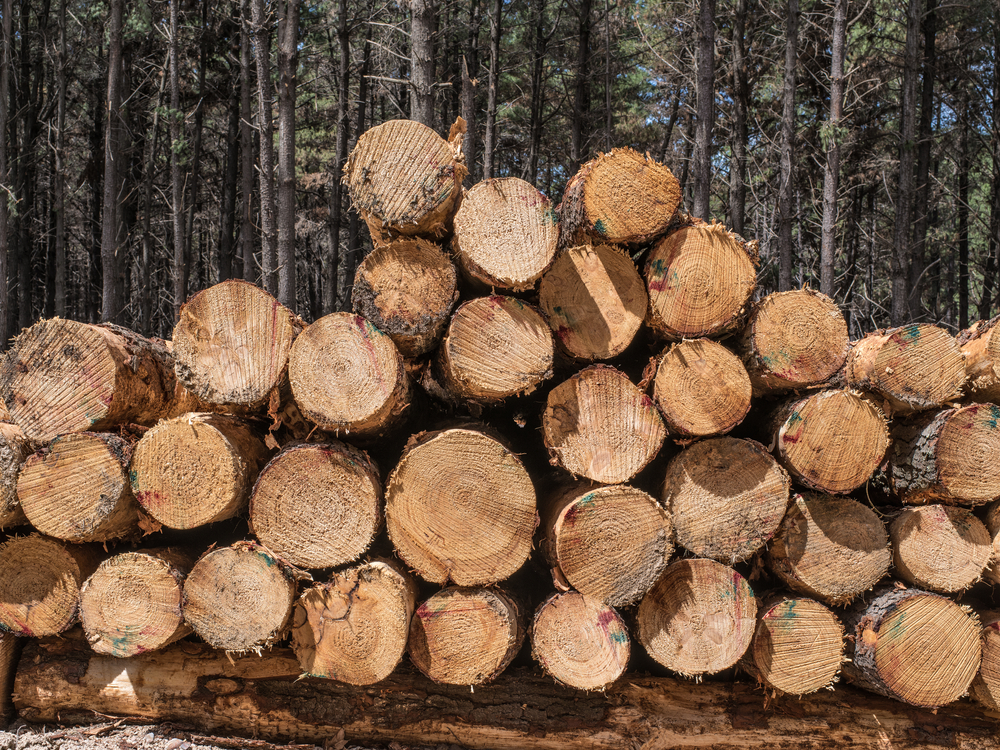
Carbon sequestration in timber is a natural process that plays a crucial role in the global effort to combat climate change. This phenomenon begins in the heart of our forests, where trees, through the process of photosynthesis, absorb carbon dioxide (CO2) from the atmosphere.
In this process, CO2, a key greenhouse gas, is used by trees to grow and thrive, converting it into oxygen and organic carbon. The carbon is stored in the wood, leaves, and roots of the trees, effectively removing it from the atmosphere.
Studies show that one cubic metre of wood stores around 0.9 tonnes of CO₂ equivalent, depending on species and density (Ergodomus, 2024).
The significance of this process in the context of timber’s carbon footprint cannot be overstated. When trees are sustainably harvested and converted into timber for construction, the carbon they have sequestered remains locked within the wood for the duration of its use.
This means that buildings and products made from timber continue to store carbon throughout their lifecycle, reducing the overall amount of CO₂ in the atmosphere. At Mortlock Timber, we harness this natural advantage by sourcing PEFC-certified Australian timber that supports long-term carbon storage and responsible forestry.
Lifecycle carbon analysis
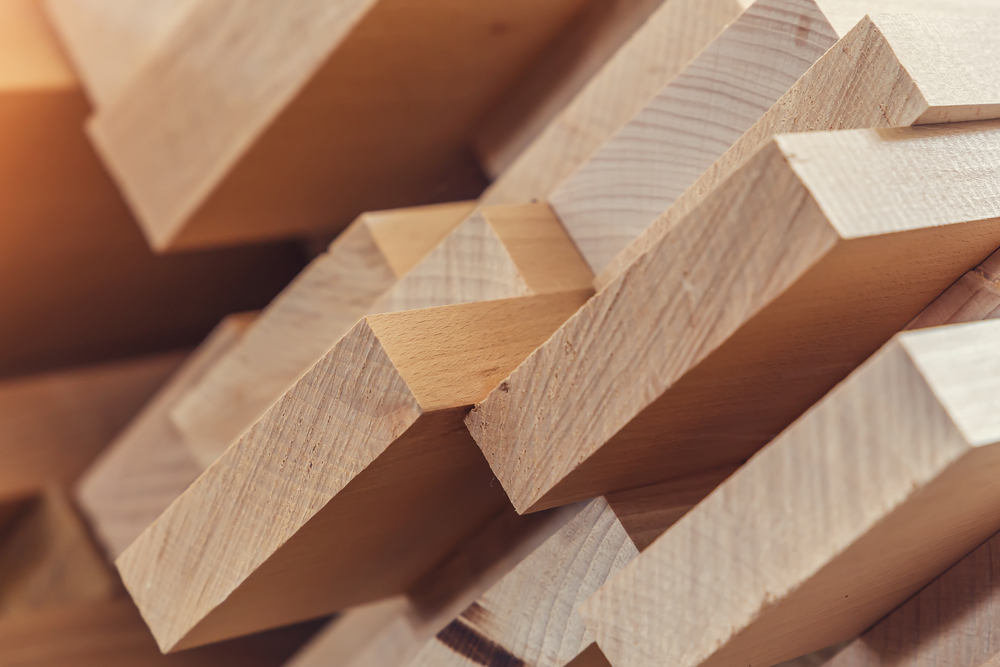
The lifecycle carbon analysis of timber offers a comprehensive look at its environmental impact from start to end, highlighting stages where its carbon footprint is notably lower compared to other construction materials.
- Growth: The initial phase of timber’s lifecycle is its growth in forests. During this period, trees actively sequester carbon dioxide from the atmosphere, a process that continues until they reach maturity. This natural carbon absorption is a unique attribute of timber, setting it apart from other building materials like steel or concrete, which have no comparable phase of carbon reduction during their production.
- Harvesting: The harvesting process does involve emissions, particularly from the use of machinery. However, these emissions are generally lower compared to the energy-intensive processes used in the extraction and production of other building materials. Additionally, sustainable forestry practices, including replanting and responsible management, help maintain the forest’s role as a carbon sink, mitigating the overall impact of this stage.
- Processing: Timber processing, including milling and transportation, does contribute to its carbon footprint. However, when compared to the manufacturing processes for materials like steel or aluminium, which are energy-intensive and involve significant emissions, timber’s processing is less impactful. The energy required to convert logs into usable wood is relatively low, especially when mills employ sustainable practices and use renewable energy sources.
- Use: In the usage phase, timber continues to store carbon, unlike other construction materials that might contribute to emissions through degradation or the need for energy-intensive maintenance. This ongoing carbon storage capability during its use in buildings or other structures is a significant advantage of timber.
- Disposal or recycling: The end of life for timber can vary. If it is burned or decomposes without oxygen, it can release stored carbon back into the atmosphere. However, many timber products can be recycled or repurposed, extending their life and keeping carbon locked up for longer. Additionally, innovations in timber disposal, such as biochar production, can further reduce its end-of-life carbon impact.
At Mortlock Timber, our products are designed for longevity and reusability—two factors that extend carbon storage and support circular design principles across the timber lifecycle.
Sustainable forestry practices
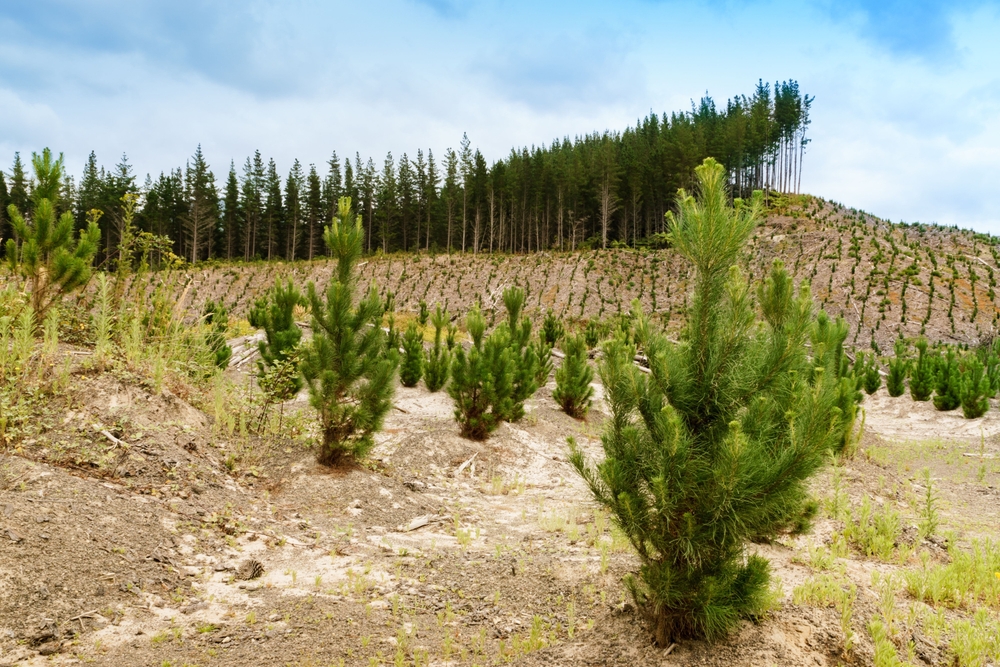
Sustainable forestry practices play a pivotal role in maximising the environmental benefits of using timber, particularly in reducing its carbon footprint. Responsibly sourced timber ensures that the harvesting of wood is conducted in a manner that maintains the health and biodiversity of forests, while also considering the long-term ecological impact.
Principles of sustainable forestry
- Selective harvesting: This involves cutting down only mature trees that have reached their carbon sequestration peak, while younger trees continue to grow and absorb CO2. This method helps maintain forest density and diversity.
- Replanting and regeneration: After harvesting, sustainable forestry practices include replanting new trees or allowing natural regeneration to occur. This not only ensures the continuous absorption of carbon dioxide but also the restoration of the ecosystem.
- Reducing environmental impact: Sustainable forestry minimises the ecological footprint of logging operations. This includes protecting water sources, preserving wildlife habitats, and using eco-friendly machinery and techniques to reduce soil erosion and degradation.
- Long-term forest management: Sustainable forestry is a long-term commitment that involves ongoing monitoring and management of forest health, ensuring that forests continue to thrive and provide ecological benefits.
Certifications & standards
To ensure that timber is harvested sustainably, several certifications and standards have been established.
The Green Building Council of Australia (GBCA) recognises both PEFC and FSC certification systems as compliant with its Green Star “Timber Credit”, confirming they meet stringent sustainability and chain-of-custody criteria.
Mortlock Timber has a PEFC-certified chain of custody and can offer PEFC-certified timber on request. PEFC certification ensures full traceability from sustainably managed forests to the final product, guaranteeing responsible harvesting and transparency across the supply chain.
By prioritising certified timber, Mortlock supports responsible forest management and contributes to the global effort to reduce carbon emissions through renewable building materials.
Comparison with other building materials
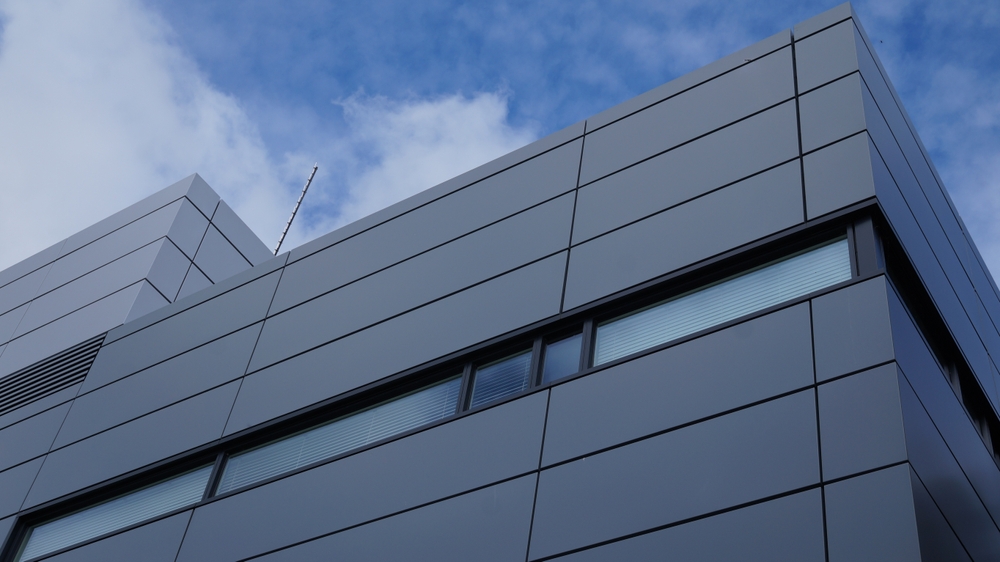
When comparing the carbon footprint of timber to that of common cladding materials like steel, aluminium, and concrete, several key factors come into play, particularly concerning energy consumption and emissions during production and disposal stages.
Steel
- Production: Steel manufacturing is an energy-intensive process involving the extraction of iron ore, smelting, and refining. This process generates a significant amount of CO2 emissions.
- Recycling: While steel can be recycled, the recycling process itself consumes energy and produces emissions, though less than its initial production.
- End of life: The durability of steel means it can have a long lifespan, potentially offsetting its initial high carbon footprint over time.
Aluminium
- Production: The production of aluminium is highly energy-intensive, mainly due to the electrolysis process in extracting aluminium from bauxite ore. It’s one of the more energy-consuming materials in terms of production.
- Recycling: Aluminium is highly recyclable, which reduces its overall carbon footprint. However, similar to steel, recycling involves energy consumption and emissions.
- End of life: Its recyclability is a significant advantage, but the initial high energy cost of production remains a downside in terms of its overall environmental impact.
Concrete
- Production: The production of cement, a key component of concrete, is notably carbon-intensive. It involves the calcination of limestone, a process that releases CO2, along with high energy use for heating.
- Usage: Concrete has a long lifespan and offers some thermal mass, but it doesn’t have the carbon sequestration benefits of timber.
- End of life: Concrete can be recycled to an extent, but its end-of-life phase often involves energy-intensive crushing and doesn’t offer any carbon offsetting benefits.
Increasing the lifespan of timber with coating
Choosing the right coating for timber is crucial in extending its lifecycle and ensuring long-term durability. A suitable coating acts as a protective barrier, shielding the timber from environmental elements such as moisture, UV rays, and temperature fluctuations.
This protection helps prevent common issues like rot, decay, warping, and fading, which can compromise the structural integrity and aesthetic appeal of the wood over time.
Moreover, a quality coating can enhance the natural beauty of the timber, enriching its colour and texture, and can also make maintenance easier and less frequent.
Overall, selecting the right coating is a vital step in enhancing the timber’s appearance, while preserving its quality and functionality. This helps increase its lifespan, making timber a more sustainable choice compared to other building materials that require frequent maintenance or replacing.
For more information on choosing the right coating, read our blog: Which Timber Coating is Right For My Project?
Find sustainably sourced timber cladding at Mortlock Timber
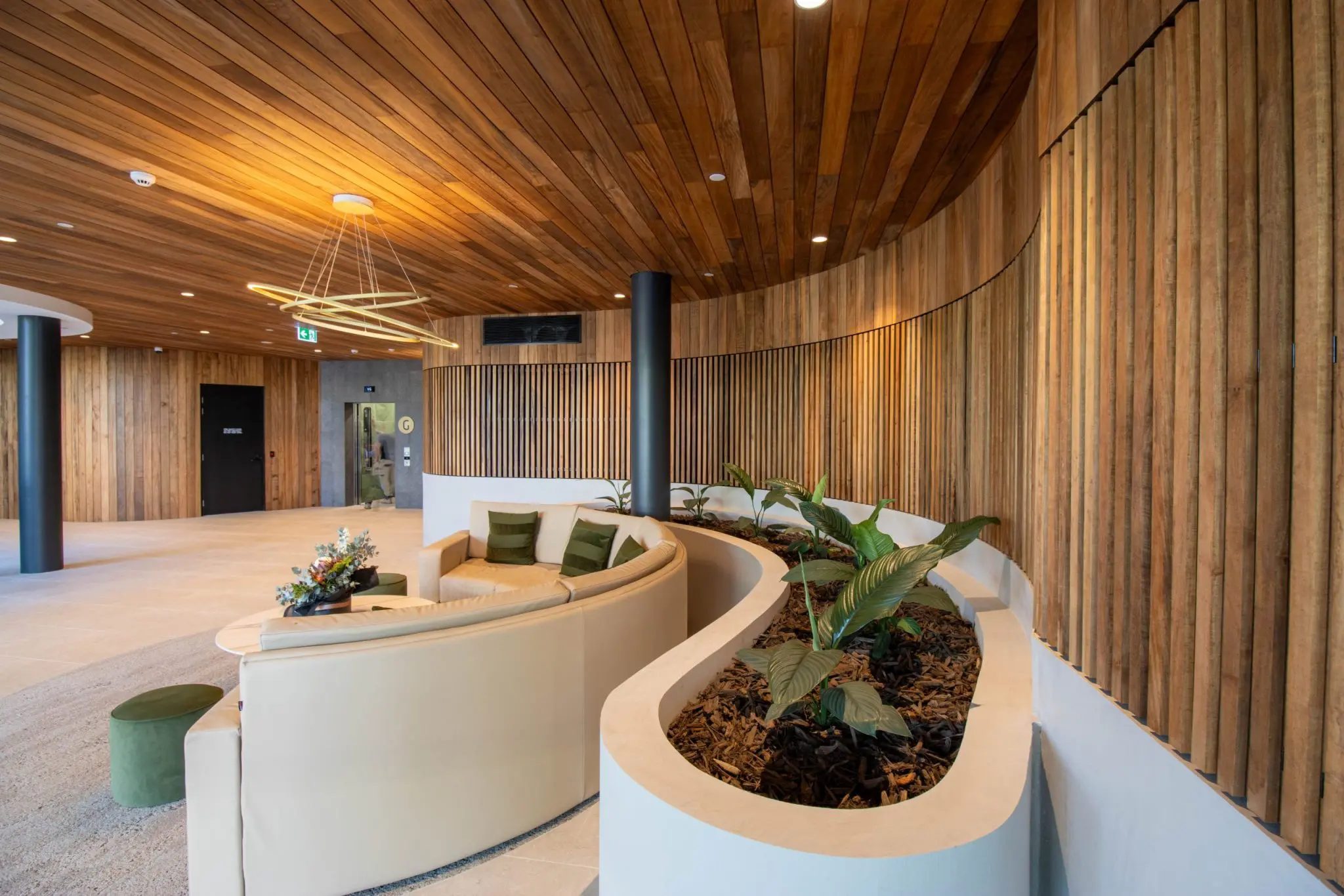
The role of timber in the construction industry is multifaceted. Not only does it provide aesthetic and functional benefits, but it also plays a significant part in addressing environmental concerns such as reducing greenhouse gases.
Overall, the sustainability of timber production, positions wood products as a key component in creating a greener future for the construction industry.
At Mortlock Timber, we understand the importance of sustainability in construction. Our range of timber products is designed with both the environment and modern architectural needs in mind. We have a PEFC certified chain of custody and can offer PEFC certified timber on request.
Discover the Mortlock Timber range today to find internal and external timber cladding that is both beautiful and sustainably sourced:
- Proplank is an excellent choice for those looking for a linear timber ceiling and wall system, combining elegance with practicality.
- Trendplank offers a versatile solution for external timber cladding, embodying durability and timeless style.
- Satinplank is tailored for those who seek the finesse of a satin finish in their interiors, providing a sophisticated touch to any space.
Contact us for more information regarding our products or if you have any questions regarding pricing. One of our friendly team members will be happy to help you!
Frequently asked questions
Why is timber considered a low-carbon building material?
Timber absorbs and stores carbon dioxide during its growth phase, keeping it locked within the wood throughout its life cycle. Each cubic metre of timber stores roughly 0.9 tonnes of CO₂, helping to offset emissions that would otherwise remain in the atmosphere. When sourced from sustainable forests, it’s one of the most effective renewable building materials for reducing embodied carbon.
How does timber’s carbon footprint compare to concrete or steel?
Timber generally produces far fewer emissions. Steel and concrete require energy-intensive extraction and manufacturing, whereas timber grows naturally and continues to store carbon once installed. Lifecycle studies show timber buildings can reduce embodied carbon by up to 75 % compared to conventional structures.
Does cutting down trees increase carbon emissions?
Not when done sustainably. Responsible forestry replaces harvested trees with new ones, maintaining the forest’s role as a carbon sink and supporting biodiversity. Mortlock sources timber only from PEFC-certified suppliers to ensure sustainable harvesting and regeneration.
What happens to timber’s carbon storage at the end of its life?
If timber is reused or recycled, the carbon remains stored within the wood. Burning or decomposition releases CO₂, but emerging methods such as biochar production can stabilise and retain much of that carbon for long-term storage.
What certifications ensure sustainable timber sourcing?
Look for PEFC or FSC certification, which verify responsible forest management, legal supply chains, and chain-of-custody transparency. Both are recognised by the Green Building Council of Australia under the Green Star Timber Credit.
How can coatings help reduce timber’s carbon footprint?
Protective coatings extend a timber product’s lifespan, reducing the need for replacement and associated emissions, which is a key sustainability advantage. Mortlock’s specialised coating systems help maintain durability and appearance, ensuring timber continues to store carbon for decades.
View our pricing and product guide
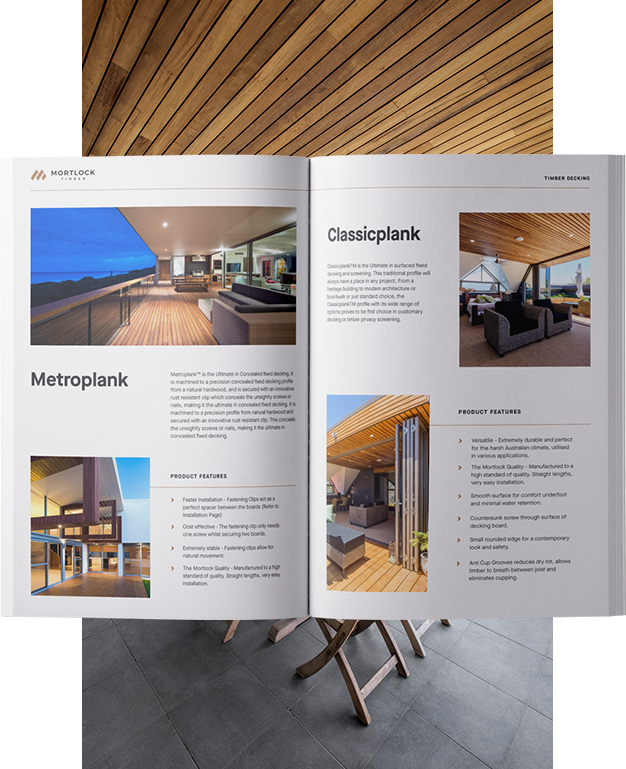
We are committed to bringing you timber products that add value and endure for years to come, even in heavy traffic and harsh weather conditions. We understand the value of efficiency when it comes to installation and keeping hardwood timber costs down. That’s why we’ve spent decades perfecting our designs to make them easier to handle, less wasteful and more efficient to install. This efficiency allows us to offer you premier products that are more cost-effective so that you can experience greater savings on timber wall costs, timber ceiling costs, timber cladding costs and timber decking costs.
Download our Pricing and Product Guide for our complete hardwood timber price list including timber decking prices, timber wall prices, timber ceiling prices and timber cladding prices.
